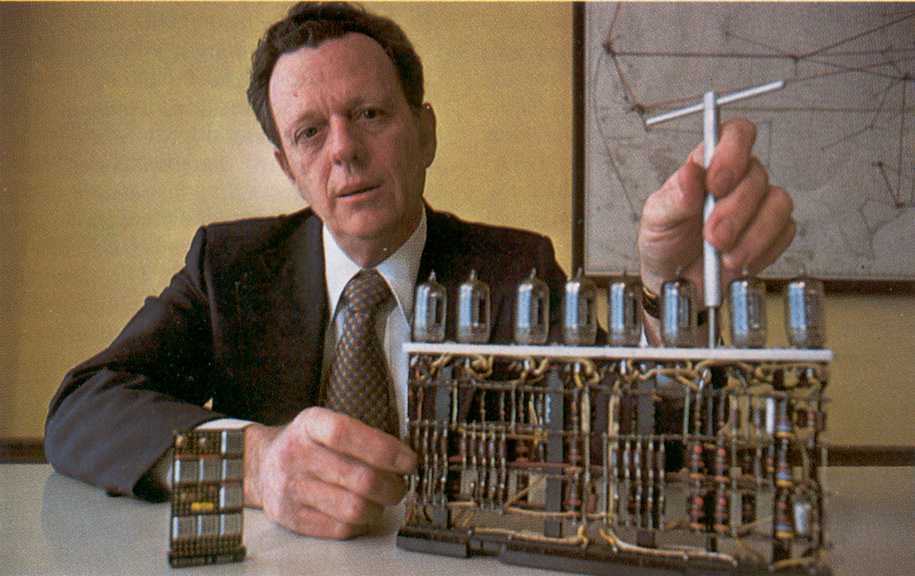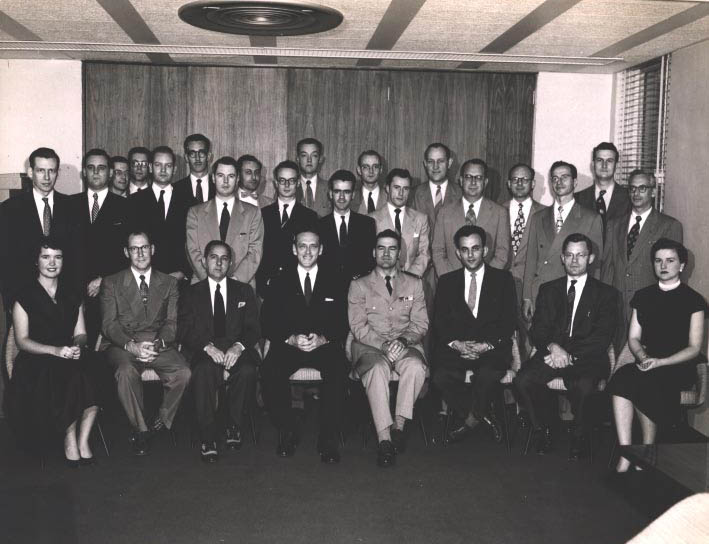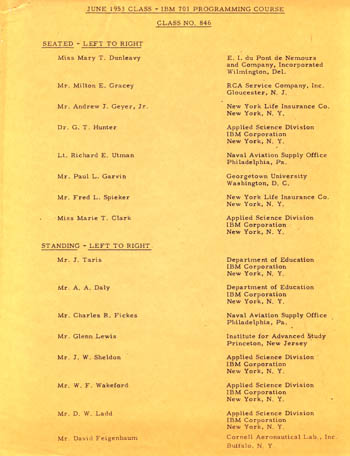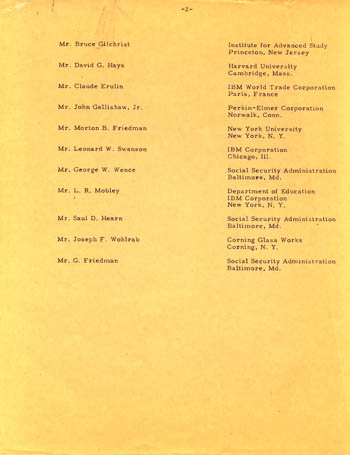The IBM 701 Defense Calculator

Photo: [4]
The IBM 701 Defense Calculator (1952) was IBM's first production computer. It was designed primarily for scientific calculation and included "microsecond circuits installed at critical locations ... to send electrical impulses from one unit to another at a speed faster than one-millionth of a second" devised at Columbia University's Watson Lab [37]. It rented for about $16,000 per month. In all, 19 units were manufactured, most of them for US national laboratories, the US Weather Bureau, aircraft manufacturers, etc, and big companies like GE. The first unit was installed in 1952 at IBM Headquarters in New York City, replacing the SSEC. The 701 came in eleven pieces:
- Two electrostatic storage units held 72 cathode-ray tubes (CRTs), sufficient to provide 2048 36-bit words.
- Three power supply and distribution units.
- The electronic analytical and control unit (CPU).
Plus card punches, readers, and recorders, a printer, a magnetic tape unit (the world's first), and a drum.

|
| Ronald Reagan and Watson Laboratory's Herb Grosch at an IBM 701 in 1954. |
According to Herb Grosch's book, Computer, Bit Slices from a Life [57], the photo at left is from Bill Bell's book on electronic data processing (the first such book ever published by McGraw-Hill), taken in the General Electric 701 machine room, Evendale, Ohio. The book is: William Bell, A Management Guide to Electronic Computers, McGraw-Hill Book Company, New York, 1957. Reagan was host of CBS General Electric Theater.
Modular Construction
The 701's vacuum tubes were collected into "pluggable units", a concept introduced with IBM's 604 Electronic Calculating Punch in 1948, which simplified troubleshooting and service of machines that had hundreds or thousands of tubes.

Photo from an IBM ad in CACM Vol.18 No. 8, Aug 1975, caption:
"Bill Stringfellow explains how the use of a
special tool, an eight-tube pluggable unit, was set into a 701 computer.
Alongside is an integrated circuit many times smaller, which performs
comparable logic functions thousands of times faster in today's System/370."
36-Bit Architecture
The 36-bit architecture was adopted by Digital Equipment Corporation for its PDP-6 and PDP-10 computers from 1964 to 1988 and by other manufacturers including Honeywell and Sperry; the Sperry/UNIVAC 1100 survives to this day [2001] as the Unisys Clearpath IX and IE series.The IBM 700 Series lives on in the terminology of the LISP programming language. From Bob Clements at BBN:
"CAR" stands for "Contents of Address part of Register", and similarly for CDR and "Decrement".The relevant instructions on the 7090/7094 had two 15-bit (not 18 bit) fields (Address part and Decrement part) for those values.
The other 6 bits were a 3-bit opcode field and a 3-bit "which index register" field. Laid out as (L to R) OP, DECR, IDX, ADDR.
There were just a few ops with that layout. They used the high opcode bit (or maybe two bits?), being ones as an escape from the normal opcode map, allowing that big field for the Decrement. Like the high digit "7"being I/O ops on the DEC machines.
On the PDP-6 (et seq) LISP's CAR and CDR were 18-bits, of course, due to all the half-word data manipulation instructions.
On the 7090, there were three index registers, named 1, 2 and 4. If you lit more than one bit in the index field, it caused the two or three index registers to be OR-ed together to get the actual value. I remember seeing that used once, in a routine that translated punch card codes somehow. One of the indexes contained either 0 or 1 at that point, depending on something or other (zone punches? who knows).
On the 7094, there were 7 index registers, 1 thru 7, and there was a mode bit you could set to switch between 7090 compatibility (three OR-ed or 7 index regs).
Education and Training

IBM 701 Programming Course, Class No. 846, June 1953


IBM photo and roster courtesy of Bruce Gilchrist
- The Bashe [4], Pugh [40], and Grosch [57] books.
- Buchholz, Werner, "The System Design of the IBM Type 701 Computer", Proceedings of the I.R.E., Vol.41 No.10 (Oct 1953), pp.1262-1275.
- Frizzell, Clarence E., "Engineering Description of the IBM Type 701 Computer", Proceedings of the I.R.E., Vol.41 No.10 (Oct 1953), pp.1275-1287.
- Backus, John W., "The IBM Speedcoding System", The Journal of the Association for Computing Machinery, Vol.1 No.1 (Jan 1954), pp.4-6.
- Sheridan, Peter, "Research in Language Translation on the IBM Type 701", IBM Technical Newsletter, No.9, IBM, New York (Oct 1955), pp.95-104.
- Stevens, Louis D., "Engineering Organization of Input and Output for the IBM 701 Electronic Data-Processing Machine", Review of Input and Output Equipment used in Computing Systems, Joint AIEE-IRE-ACM Computer Conference, American Institute of Electrical Engineers, New York (Mar 1953), pp.81-85.
- Gilchrist, Bruce, "Remembering Some Early Computers, 1948-1960", Columbia University EPIC (link below), pp.7-9.
- IBM 701 Intro (IBM archive)
- IBM 701 Reference Room (IBM archive)
- IBM 711 Punched Card Reader (for the 701)
- The IBM 700 Series, IBM 100, accessed 26 December 2019.